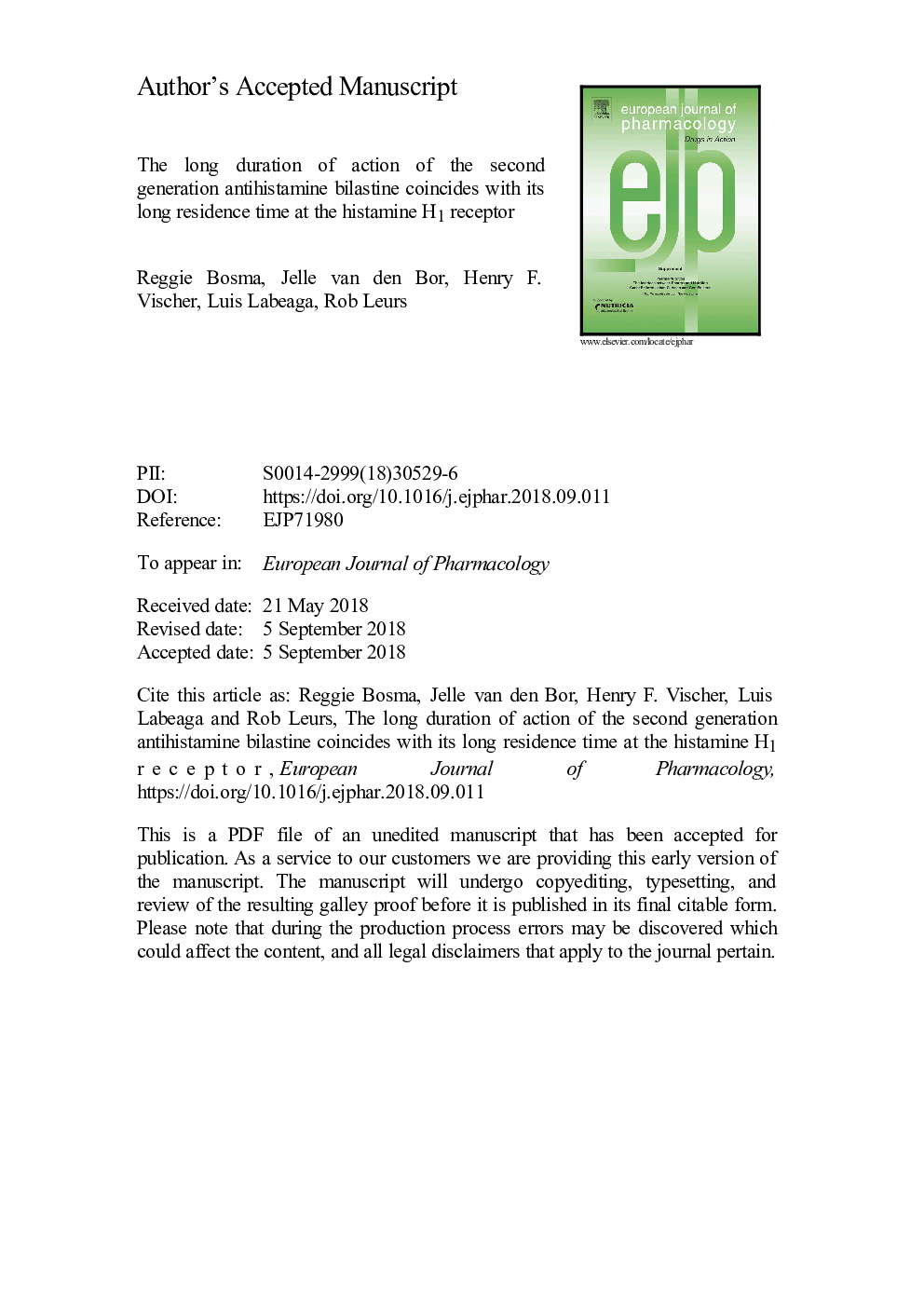| کد مقاله | کد نشریه | سال انتشار | مقاله انگلیسی | نسخه تمام متن |
|---|---|---|---|---|
| 10158427 | 1666526 | 2018 | 20 صفحه PDF | دانلود رایگان |
عنوان انگلیسی مقاله ISI
The long duration of action of the second generation antihistamine bilastine coincides with its long residence time at the histamine H1 receptor
دانلود مقاله + سفارش ترجمه
دانلود مقاله ISI انگلیسی
رایگان برای ایرانیان
کلمات کلیدی
موضوعات مرتبط
علوم زیستی و بیوفناوری
علم عصب شناسی
علوم اعصاب سلولی و مولکولی
پیش نمایش صفحه اول مقاله

چکیده انگلیسی
Drug-target binding kinetics has recently attracted considerable interest in view of the potential predictive power for in vivo drug efficacy. The recently introduced antihistamine bilastine has a long duration of in vivo drug action, which outlasts pharmacological active bilastine concentrations in blood. To provide a molecular basis for the long duration of action, we explored the kinetics of bilastine binding to the human histamine H1 receptor using [3H]mepyramine binding studies and compared its pharmacodynamics properties to the reference compounds fexofenadine and diphenhydramine, which have a long (60â¯Â±â¯20â¯min) and short (0.41â¯Â±â¯0.1â¯min) residence time, respectively. Bilastine shows a long drug-target residence time at the H1 receptor (73â¯Â±â¯5â¯min) and this results in a prolonged H1 receptor antagonism in vitro (Ca2+ mobilization in Fluo-4 loaded HeLa cells), following a washout of unbound antagonist. Hence, the long residence time of bilastine can explain the observed long duration of drug action in vivo.
ناشر
Database: Elsevier - ScienceDirect (ساینس دایرکت)
Journal: European Journal of Pharmacology - Volume 838, 5 November 2018, Pages 107-111
Journal: European Journal of Pharmacology - Volume 838, 5 November 2018, Pages 107-111
نویسندگان
Reggie Bosma, Jelle van den Bor, Henry F. Vischer, Luis Labeaga, Rob Leurs,